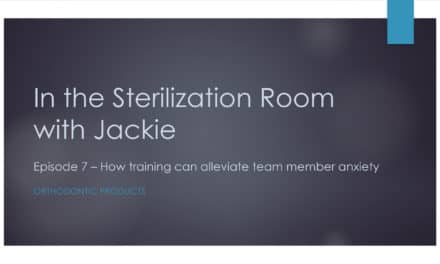How documented, proven, step-by-step business systems can help your orthodontic practice manage the crisis
By Roger P. Levin, DDS
Orthodontics, and all of dentistry, is undergoing a staffing crisis. What makes an orthodontic practice’s staffing situation even more dire is that they don’t simply compete with other orthodontic practices for new staff members. They also compete with all dental practices as well as many other industries. This will be a critical factor as Levin Group is projecting that the staffing shortage will last for anywhere from 5 to 8 years.
In order to effectively address this crisis, we have identified six components that must be addressed by orthodontic practices: recruiting, interviewing, hiring, training, retaining, and anti-burnout. Each of these components has very specific factors that will allow practices to excel in that area. However, one of the single most important factors that is often overlooked by orthodontic practices is the implementation of documented, proven, step-by-step business systems.
How can systems improve staffing?
If a practice has a missing team member, the obvious remedy would be to immediately hire a replacement. However, this solution must also be coupled with an intense focus on retaining and retraining existing team members. And the only way to properly retain and retrain the existing team is to provide documented, proven, step-by-step systems. “Documented” means team members can access information about the systems at any time. “Proven” means that these systems already exist in other practices and are working successfully. “Step-by-step” means that the true systems are now the instruction manuals on how to do the job properly and what steps to take.
There is simply no better training method than the implementation of documented, proven, step-by-step systems for the practice that allow for maximum efficiency. Here are the areas where effective systems can help:
1. Staff training
Orthodontic practices may find that they are short of staff, hiring less experienced individuals, experiencing a lower volume of patients due to new infection control factors, or noting a decline in overall customer service and performance.
Documented, proven, step-by-step system help the training program to maximize efficiency and help current team members move to their highest level of performance.
2. Staff members seeking greater job satisfaction
Staff members no longer simply want a paycheck. They want to enjoy their jobs and feel they’re making a difference. One of the key elements of retaining the current team is for them to feel like they have a relationship-based job and not a transactional job (ie, “I pay you, you work”). When you invest in training, which can only come from the implementation of excellent systems, you create an environment where people feel they have an opportunity to grow and contribute.
Documented, proven, step-by-step systems become the training guide for current team members and allow for training of new team members at twice the normal pace that would’ve taken place in the past.
3. Creating an enjoyable and fun environment
Keep in mind that team members will view your practice as part of their social life as it can offer opportunities for friendship and camaraderie. Furthermore, many younger people state that they also want to make a difference. A fun and enjoyable environment is essential, and an entire textbook could be written on that subject.
Documented, proven, step-by-step systems help maximize efficiency, which also means reducing stress, allowing for a more enjoyable and fun environment. You also need a system around treating your team as customers. Creating a fun and enjoyable environment can mean surprise lunches in the office, dinner gift certificates for team members and family members, team events outside of the office, and positive inspirational leaders in the office.
4. Increasing starts
The ultimate objective of every orthodontic practice is to increase practice revenue every year. The mistake many practices make is that they simply think marketing is the only factor in practice growth. In order words: if they get enough consults, they will be fine. Unfortunately, it is like a funnel where a lot can go into the top but a smaller amount, meaning starts, comes out the bottom. Practices must focus on turning consults into starts through your treatment coordinator (TC) new patient appointment process.
Documented, proven, step-by-step systems also means having a documented, proven, step-by-step TC appointment. Training the treatment coordinator is also a highly systemized process. When done right, TCs will close 85% of all non-observation patients that present for consult. Unfortunately, most practices don’t do it right. In the past this was okay, but it will not be okay in the future. Having a system that is continually measured and monitored will make the difference.
In a 30-year ongoing study of the top 10% of orthodontic practices Levin Group has continually found that these practices have the best systems and upgrade them regularly. Team members will have great appreciation for the opportunity to grow and learn and contribute at a higher level through systems that allow for ongoing training, modification, and measurement. Think of it this way: you wouldn’t want to buy a software program that hasn’t been upgraded in years. Ensuring your practice has documented, proven, and step-by-step will put you on a path toward practice success. OP

Roger P. Levin, DDS, is the CEO and founder of Levin Group, a leading practice management consulting firm that has worked with over 30,000 practices to increase production. A recognized expert on orthodontic practice management and marketing, he has written 67 books and over 4,000 articles and regularly presents seminars in the United States and around the world. To contact Levin or to join the 40,000 dental professionals who receive his Ortho Practice Production Tip of the Day, visit levingroup.com or email [email protected].










